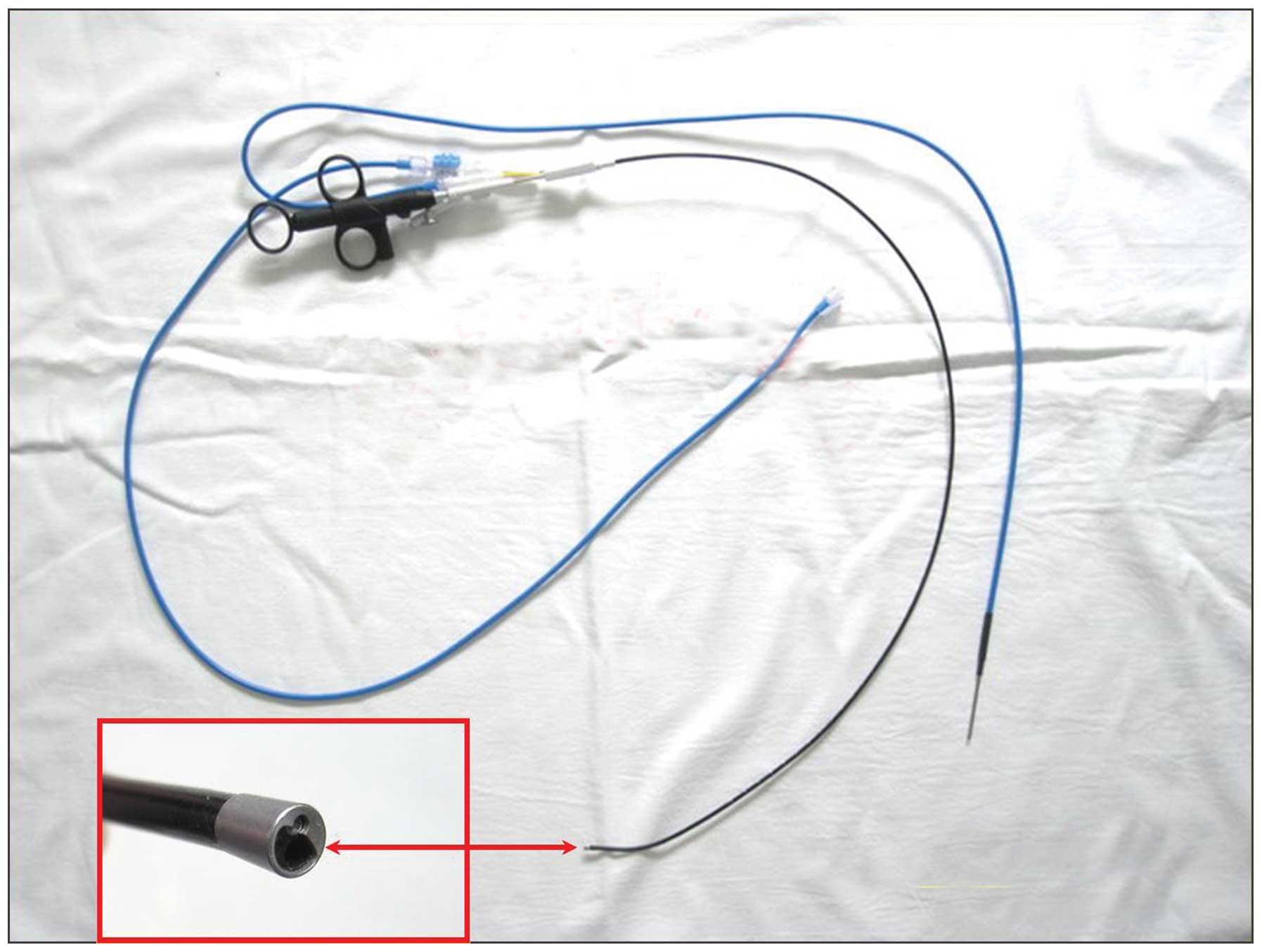|
1
|
Marshall VF: Fiber optics in urology. J
Urol. 91:110–114. 1964.PubMed/NCBI
|
|
2
|
Afane JS, Olweny EO, Bercowsky E, Sundaram
CP, Dunn MD, Shalhav AL, McDougall EM and Clayman RV: Flexible
ureteroscopes: A single center evaluation of the durability and
function of the new endoscopes smaller than 9Fr. J Urol.
164:1164–1168. 2000. View Article : Google Scholar : PubMed/NCBI
|
|
3
|
Landman J, Lee DI, Lee C and Monga M:
Evaluation of overall costs of currently available small flexible
ureteroscopes. Urology. 62:218–222. 2003. View Article : Google Scholar : PubMed/NCBI
|
|
4
|
Carey RI, Gomez CS, Maurici G, Lynne CM,
Leveillee RJ and Bird VG: Frequency of ureteroscope damage seen at
a tertiary care center. J Urol. 176:607–610. 2006. View Article : Google Scholar : PubMed/NCBI
|
|
5
|
Canales BK, Gleason JM, Hicks N and Monga
M: Independent analysis of Olympus flexible ureteroscope repairs.
Urology. 70:11–15. 2007. View Article : Google Scholar : PubMed/NCBI
|
|
6
|
Bader MJ, Gratzke C, Walther S, Schlenker
B, Tilki D, Hocaoglu Y, Sroka R, Stief CG and Reich O: The
PolyScope: A modular design, semidisposable flexible
ureterorenoscope system. J Endourol. 24:1061–1066. 2010. View Article : Google Scholar : PubMed/NCBI
|
|
7
|
Johnson MT, Khemees TA and Knudsen BE:
Resilience of disposable endoscope optical fiber properties after
repeat sterilization. J Endourol. 27:71–74. 2013. View Article : Google Scholar : PubMed/NCBI
|
|
8
|
Tiselius HG, Ackermann D, Allen P, Buck C,
Conort P and Gallucci M: Working Party on Lithiasis, European
Association of Urology: Guidelines on urolithiasis. Eur Urol.
40:362–371. 2001. View Article : Google Scholar : PubMed/NCBI
|
|
9
|
Mitropoulos D, Artibani W, Graefen M,
Remzi M, Rouprêt M and Truss M: European Association of Urology
Guidelines Panel: Reporting and grading of complications after
urologic surgical procedures: An ad hoc EAU guidelines panel
assessment and recommendations. Eur Urol. 61:341–349. 2012.
View Article : Google Scholar : PubMed/NCBI
|
|
10
|
Defidio L, De Dominicis M, Di
Gianfrancesco L, Fuchs G and Patel A: Improving flexible
ureterorenoscope durability up to 100 procedures. J Endourol.
26:1329–1334. 2012. View Article : Google Scholar : PubMed/NCBI
|
|
11
|
Sooriakumaan P, Kaba R, Andrews HO and
Buchholz NP: Evaluation of the mechanisms of damage to flexible
ureteroscopes and suggestions for ureterorenoscopy preservation.
Asian J Androl. 7:433–438. 2005. View Article : Google Scholar : PubMed/NCBI
|
|
12
|
Bagley DH and Rittenberg MH: Percutaneous
antegrade flexible ureteroscopy. Urology. 27:331–334. 1986.
View Article : Google Scholar : PubMed/NCBI
|
|
13
|
Bansal H, Swain S, Sharma GK, Mathanya M,
Trivedi S, Dwivedi US and Singh PB: Polyscope: A new era in
flexible ureterorenoscopy. J Endourol. 25:317–321. 2011. View Article : Google Scholar : PubMed/NCBI
|
|
14
|
Gu SP, Huang YT, You ZY, Zhou X, Lu YJ, He
CH and Qi J: Clinical effectiveness of the PolyScope™ endoscope
system combined with holmium laser lithotripsy in the treatment of
upper urinary calculi with a diameter of less than 2 cm. Exp Ther
Med. 6:591–595. 2013.PubMed/NCBI
|
|
15
|
Breda A, Ogunyemi O, Leppert JT and
Schulam PG: Flexible ureteroscopy and laser lithotripsy for
multiple unilateral intrarenal stones. Eur Urol. 55:1190–1196.
2009. View Article : Google Scholar : PubMed/NCBI
|
|
16
|
Cohen J, Cohen S and Grasso M:
Ureteropyeloscopic treatment of large, complex intrarenal and
proximal ureteral calculi. BJU Int. 111:E127–E131. 2013. View Article : Google Scholar : PubMed/NCBI
|
|
17
|
Dasgupta P, Cynk MS, Bultitude MF, Tiptaft
RC and Glass JM: Flexible ureterorenoscopy: Prospective analysis of
the Guy's experience. Ann R Coll Surg Engl. 86:367–370. 2004.
View Article : Google Scholar : PubMed/NCBI
|
|
18
|
Riley JM, Stearman L and Troxel S:
Retrograde ureteroscopy for renal stones larger than 2.5 cm. J
Endourol. 23:1395–1398. 2009. View Article : Google Scholar : PubMed/NCBI
|
















